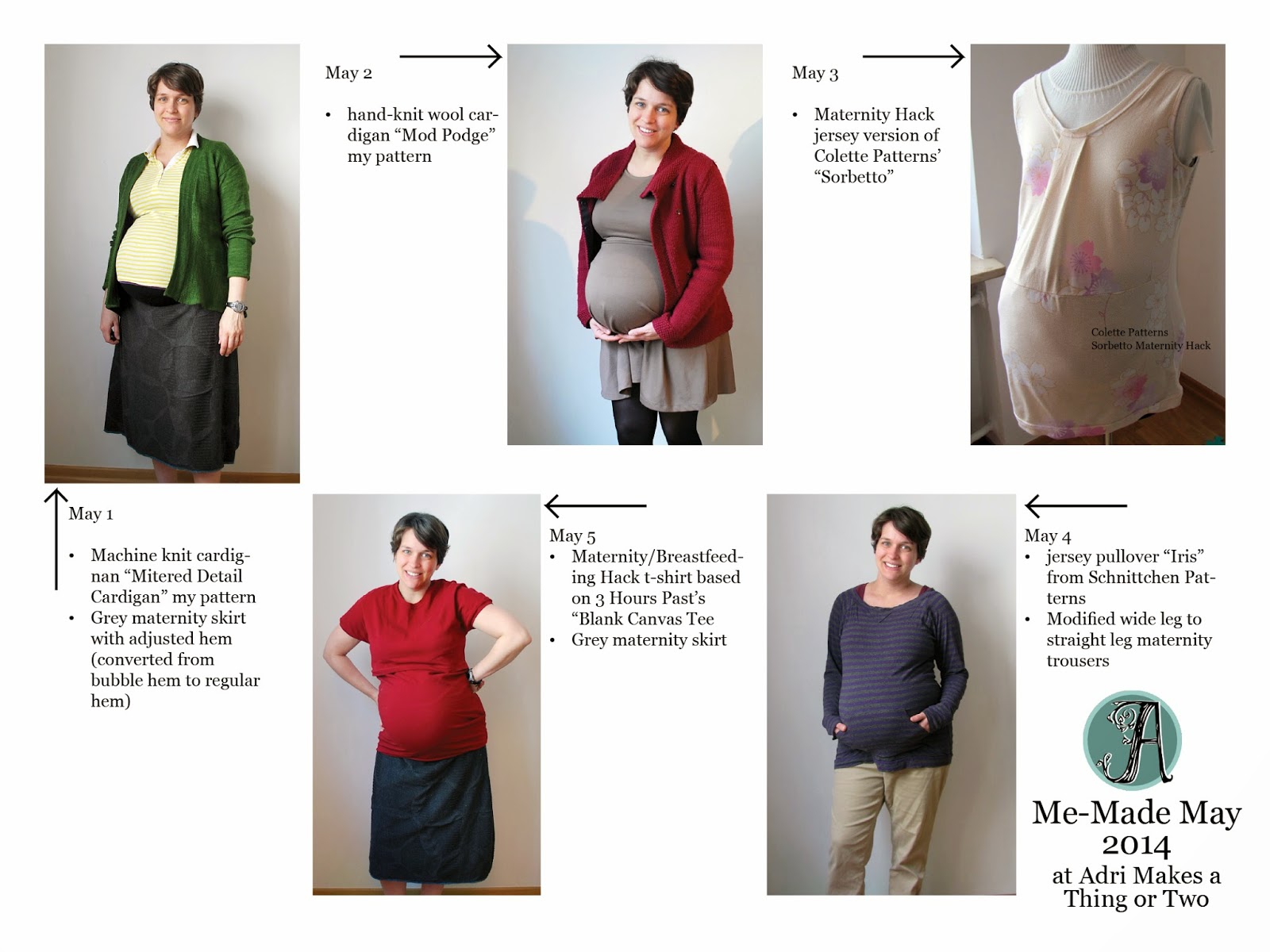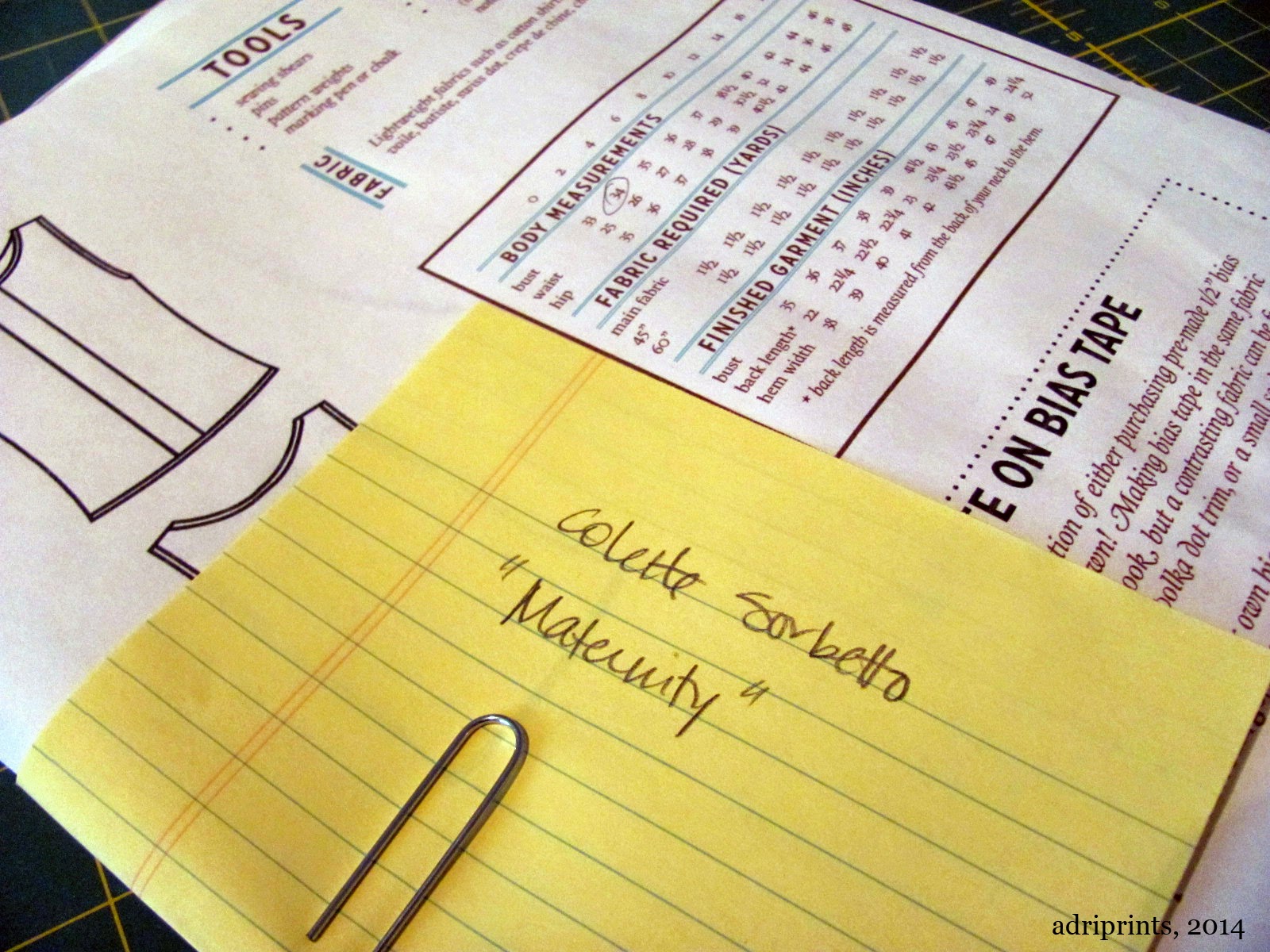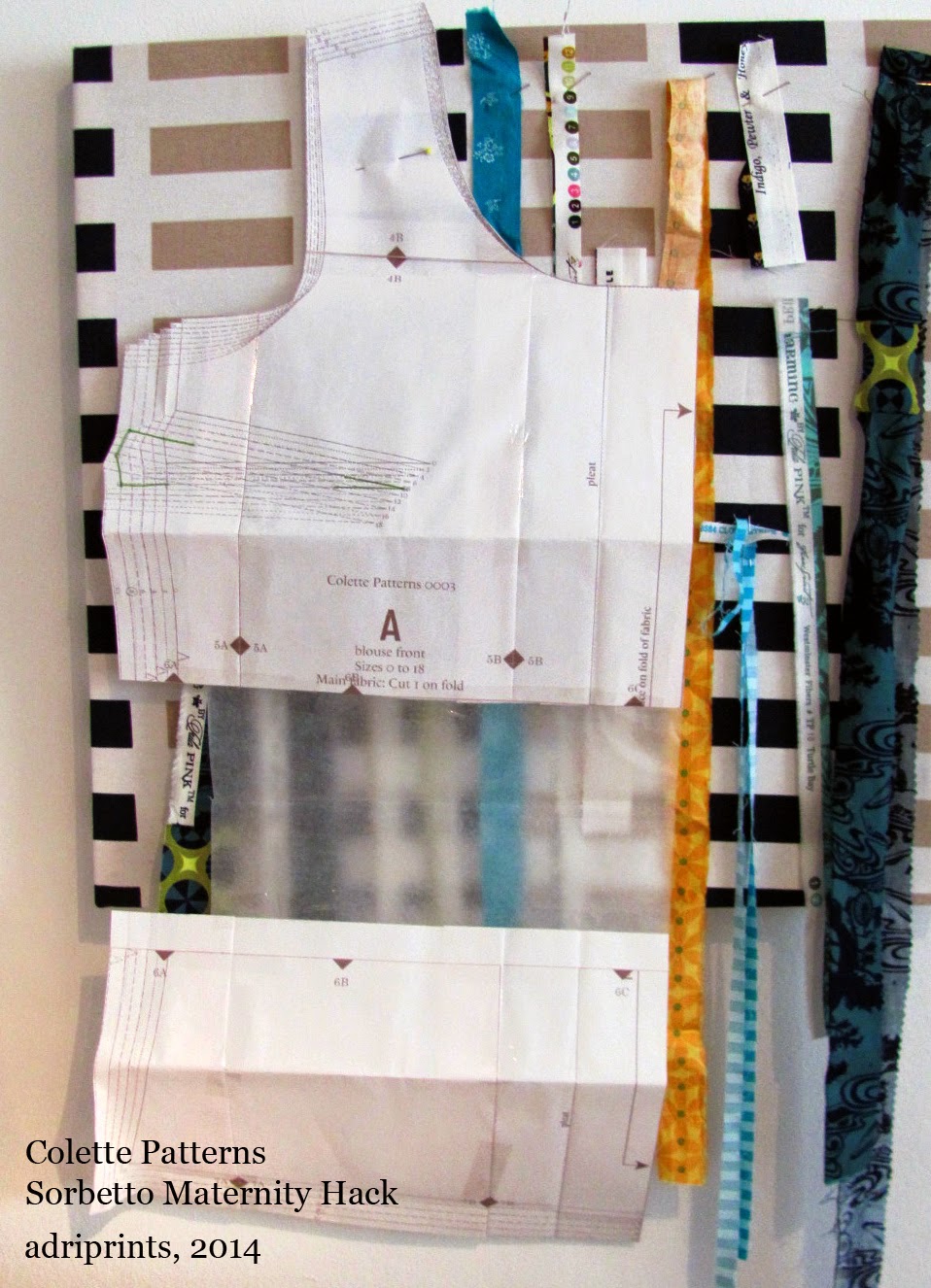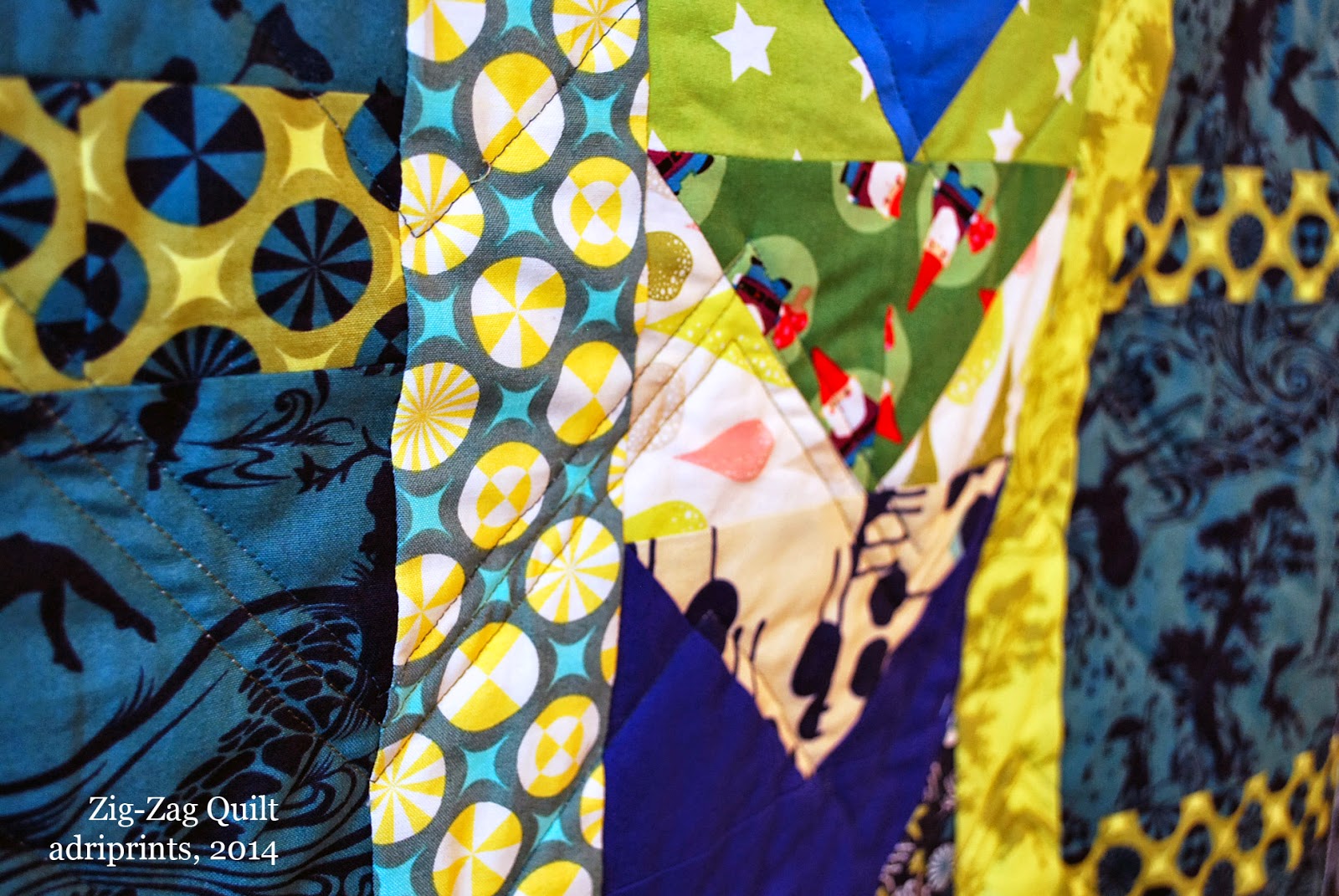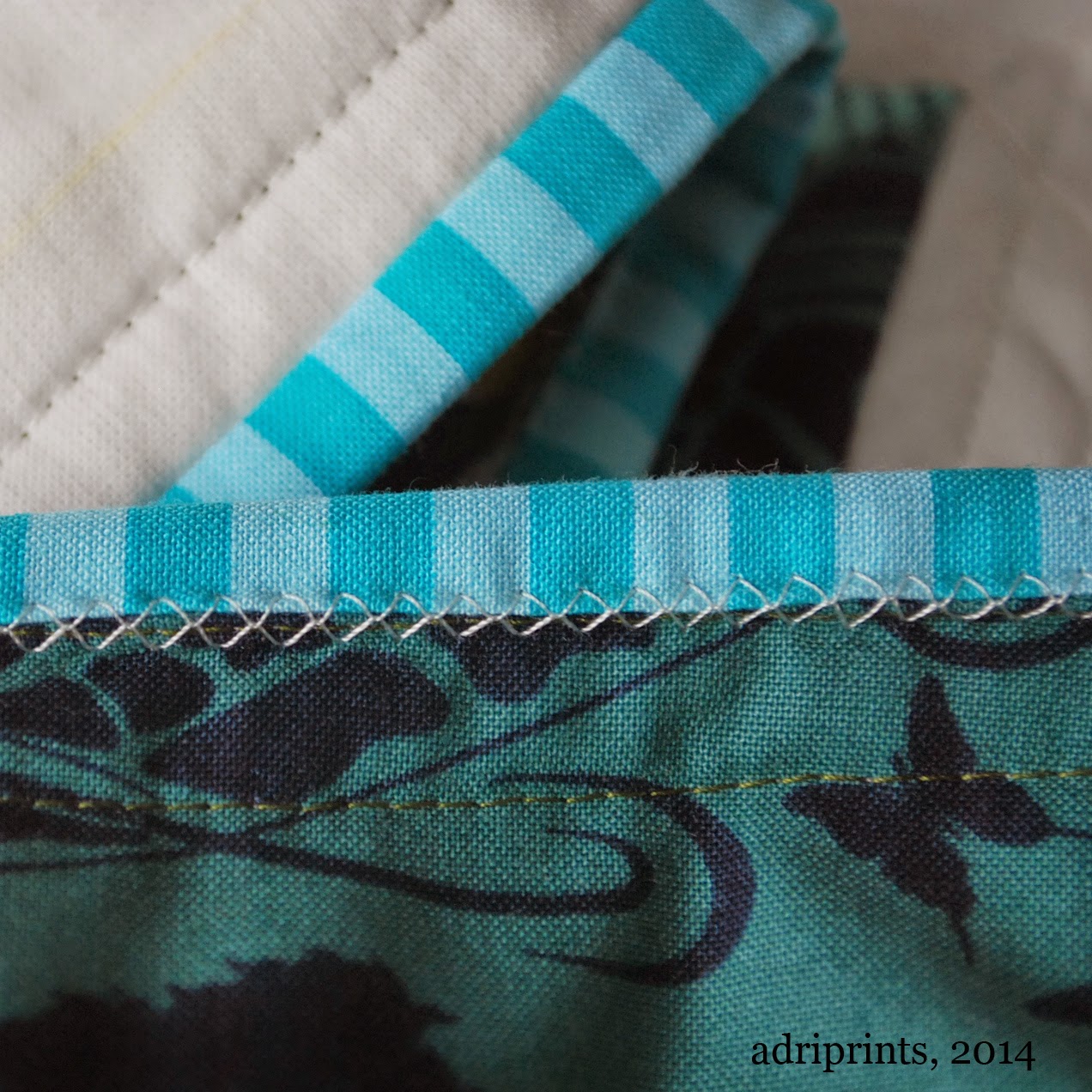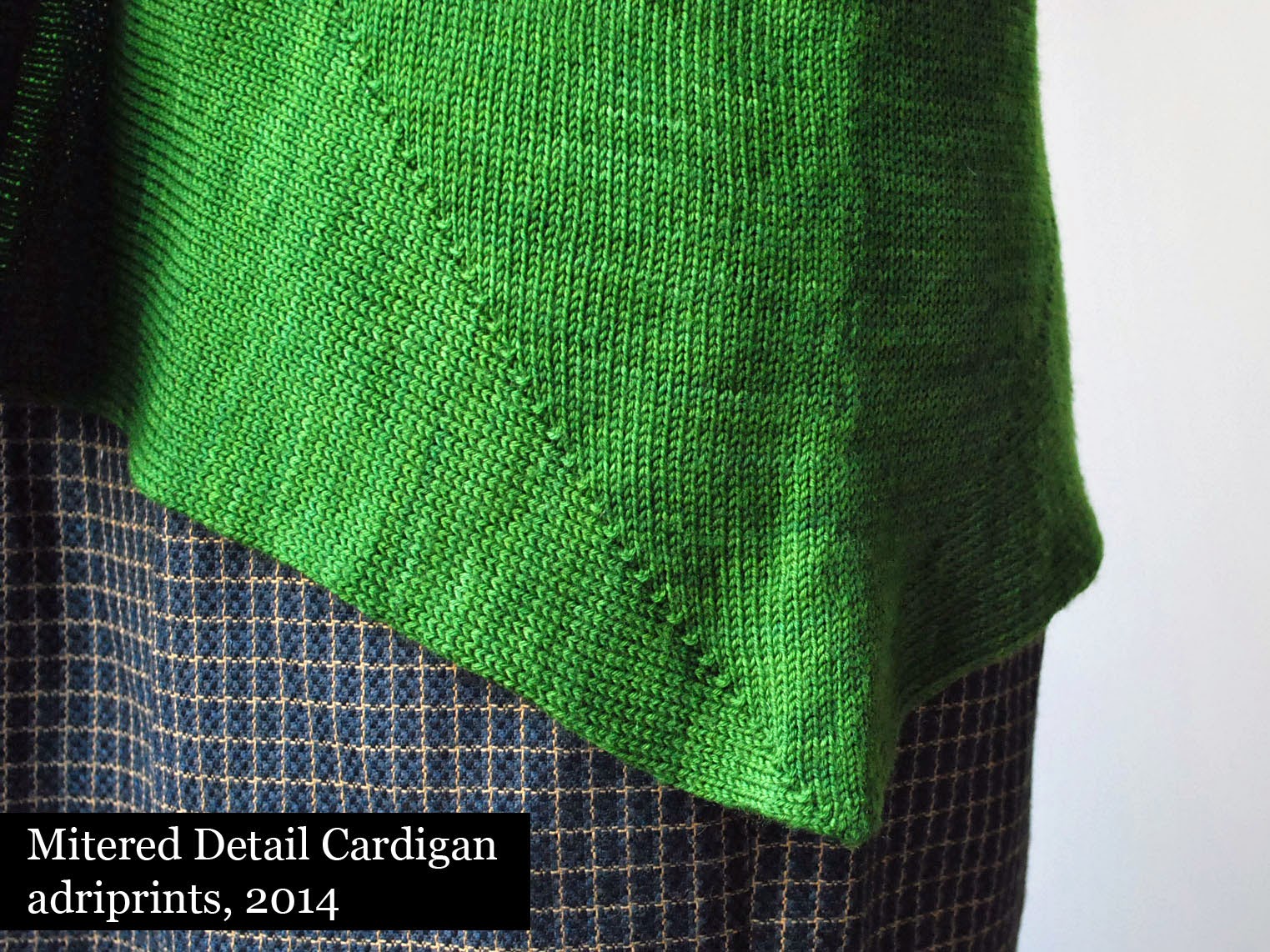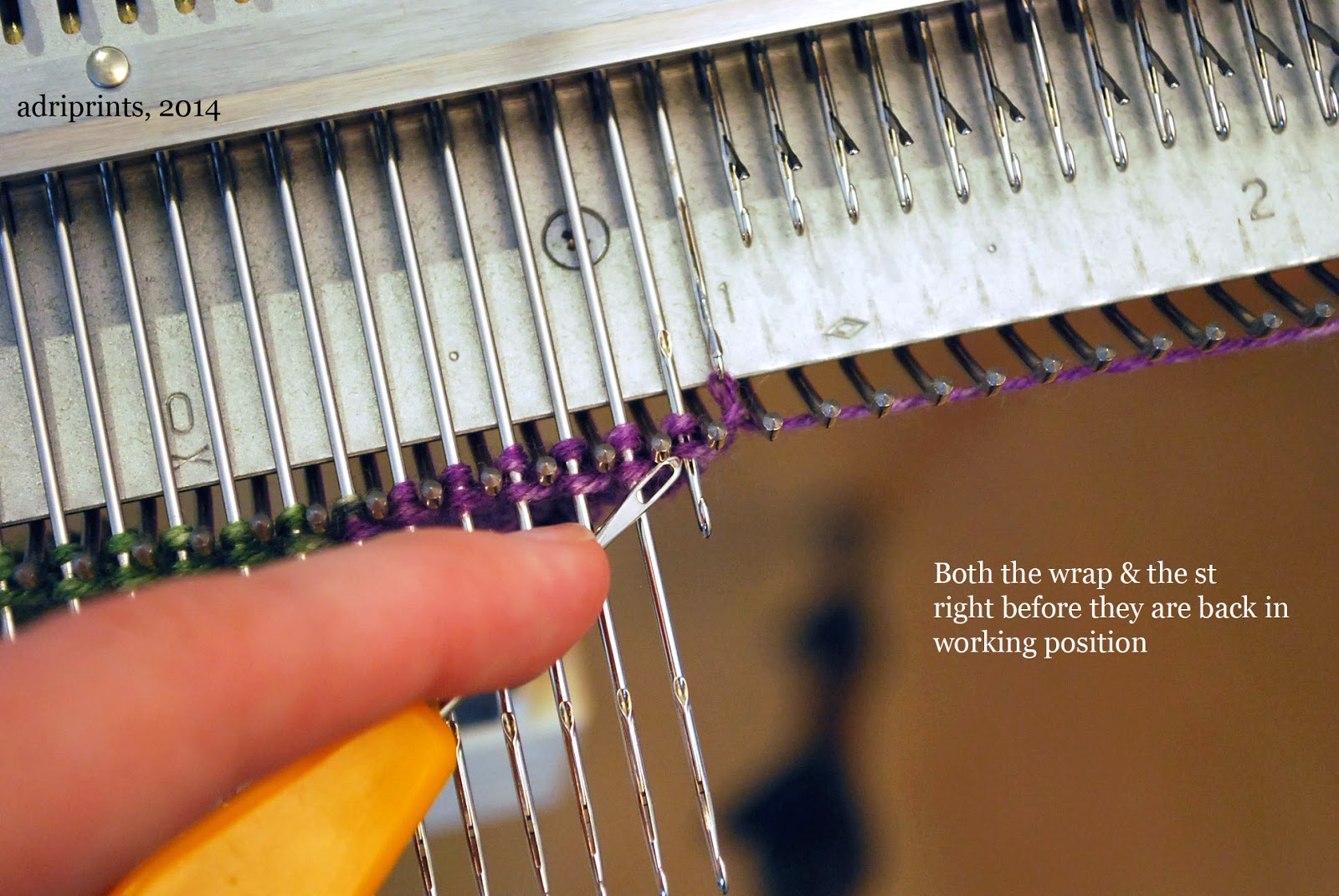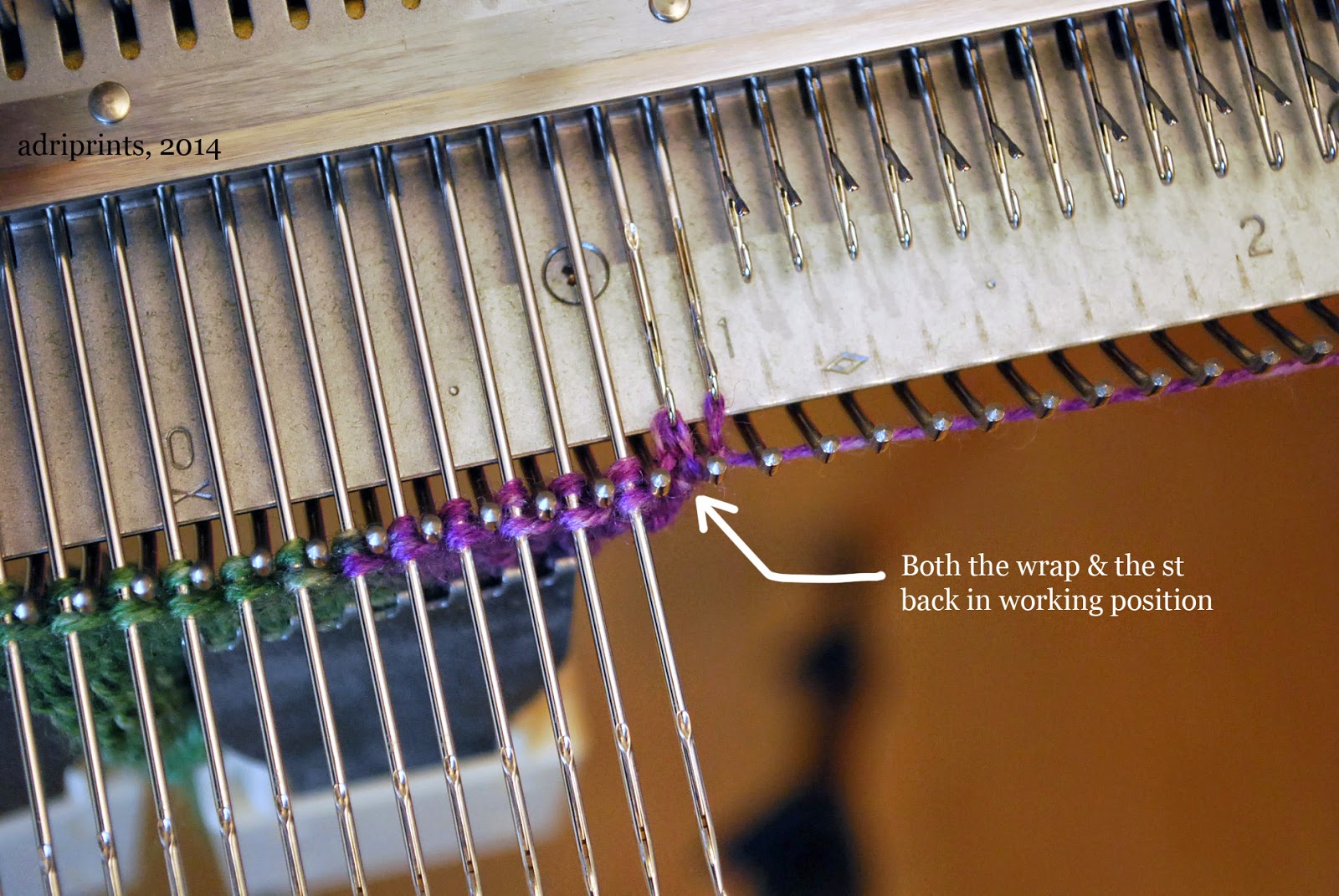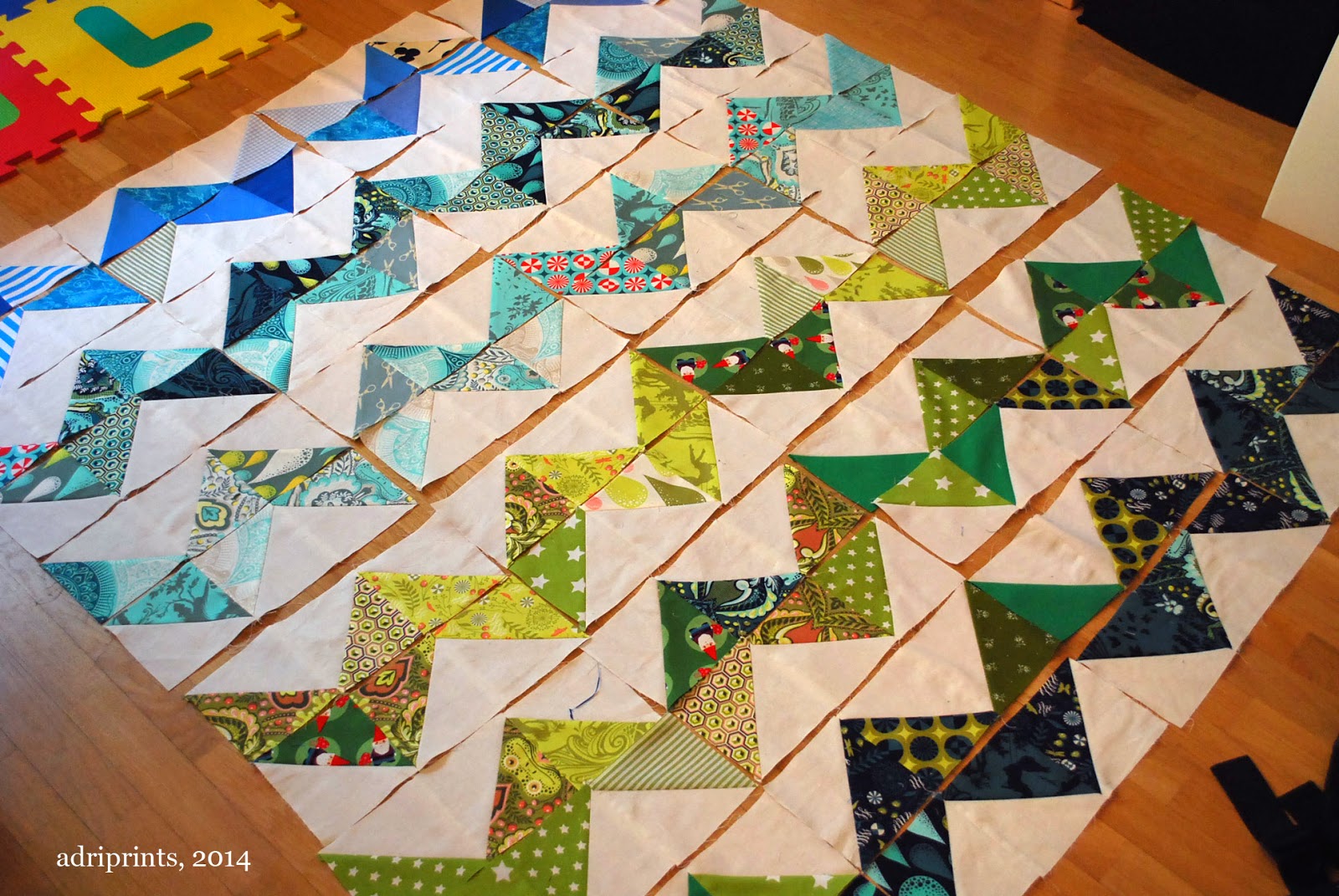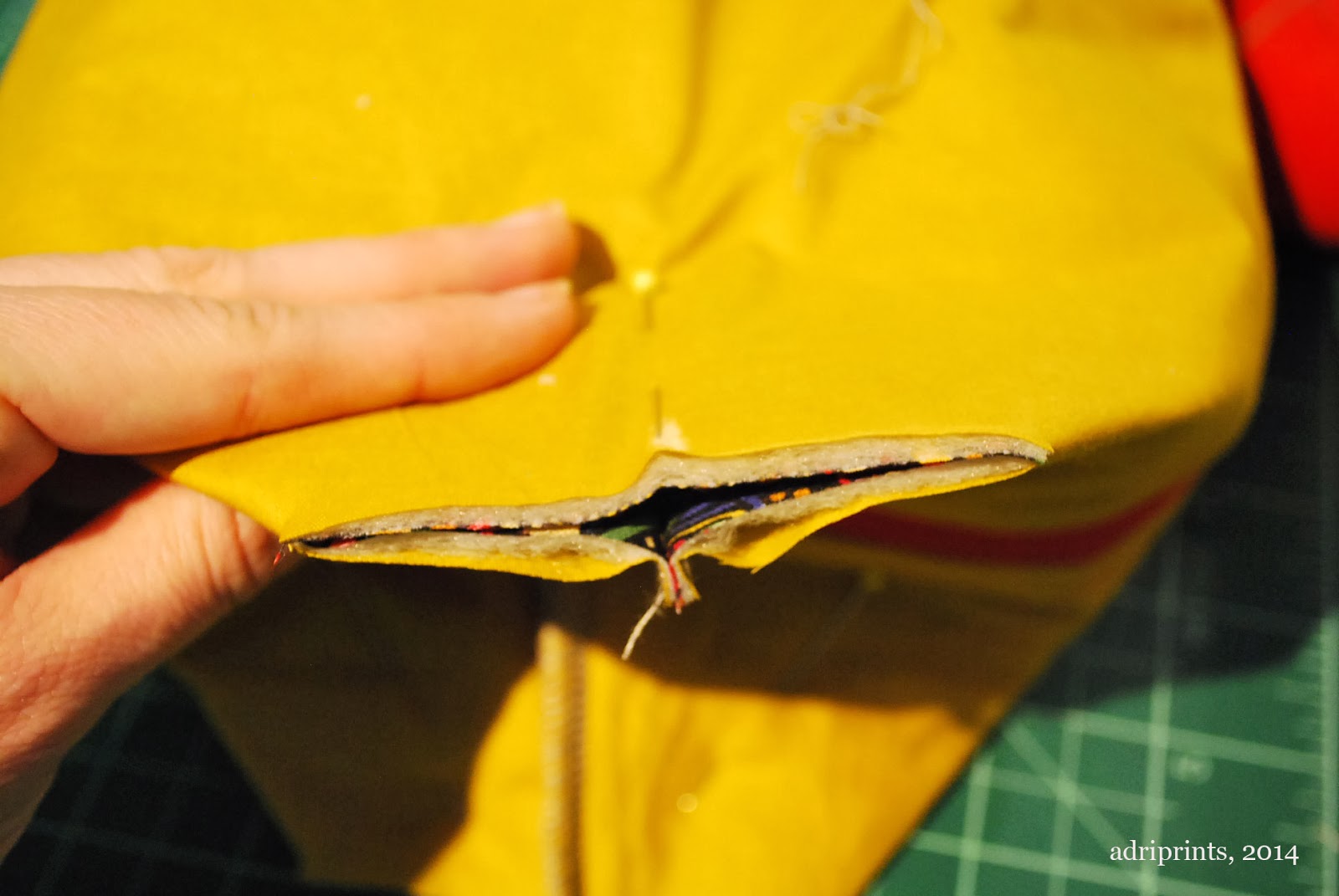If you're just starting out sewing with knits, a great place to start is a simple dolman sleeved t-shirt like the Blank Canvas Tee from 3 Hours Past the Edge of the World's Blog. If you're past that, are ready to try some drafting, and would like to make yourself a breastfeeding or maternity top, then this is the mod for you!
Start with the Blank Canvas Tee from 3 Hours Past...
Added Materials
- additional fabric because the length of the T-shirt is extended.
- 1 piece of elastic - soft baby elastic or elastic about 1/4" wide that suits your fancy in the width of your t-shirt + 2" or so.
Extra Skills
- sewing with elastic
Special Tools
- twin needle
- stretch needle 75/11 (a whaah? Here's a needle guide from Schmetz)
- pencil and ruler
- maybe tracing paper if you don't want to write on your pattern
Okay. Ready to make your own?
First print and assemble your pattern pieces from 3 Hours Past... Then, here's our goal: we want to create two pieces for the front that overlap by around 5" / 13cm for the smaller sizes. You'll likely need a bit more overlap for the larger sizes or if you usually find yourself doing large bust adjustments.
 |
| The goals. |
See the red highlight? That's the top front piece. The blue highlight shows where the the bottom front piece would be. For the bottom, I took the design line straight up and did not taper in like the pattern - it's housing a big belly at the moment, and I thought it would be advantageous to have a little leeway.
The other change I made here was adding length. Add what you will. My goal was to have a t-shirt around 28" so I added a few inches to the bottom of both the back and front bottom pieces to achieve that. I just followed the design lines to my goal length. To calculate length, I measured from the peak of the shoulder, parallel to the fold line.
Alright, you've traced and cut your 3 pattern pieces. Do you have your edging pieces (no change from pattern) cut, too? And those two strips of interfacing for the shoulders? What interfacing? I used Vlieseline G785 since it's stretchy, lightweight, and works with knits. Everything cut? Great! Let's get these pieces ready to put together.
Assembly:
- Step 2 from pattern: Iron on interfacing to WS of back piece shoulder edges
- Front top piece - finish bottom edge with zig zag stitch or serge, turn up and twin needle the hem from the right side
- Front bottom piece - add elastic to top RS edge using a triple zig-zag stitch. How? I simultaneously slightly stretch the elastic while guiding the main fabric under the presser foot. I do not stretch the main fabric. Right hand for elastic, left hand for guiding fabric. I do this 2" at a time so I don't lose my nerve. Then, I fold over the elastic so I only see the final fabric, and straight stitch the bottom edge of the elastic.
- Overlap the two front pieces- With RS facing you, make sure the front top is on top, and the front bottom is behind it. Make sure the overlap is what you desire and pin. Stay stitch within the seam allowances (so ~1/8" from the edge) to secure the overlap.
- Step 3 to 9 are the same as the original pattern.




